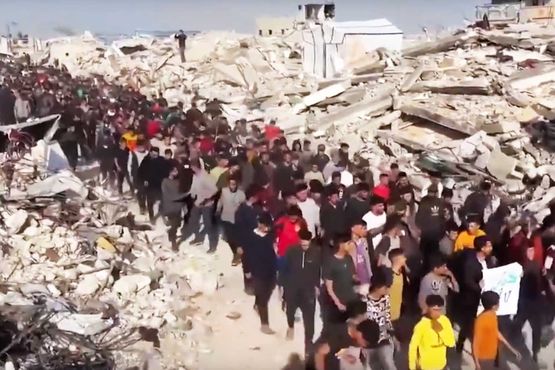Why are they protesting?

© 2025 / screenshot
It is important to put the protests of a part of the population in the Gaza Strip into context. To understand without misinterpreting. Here is a navigation map, created thanks to direct sources.
A mixture of disparate elements sparked the protests.
The part of the population that is not receiving the aid given by Hamas is protesting. The party is criticised for favouring its own supporters, the families of fallen or wounded combatants and administrative employees who have not been paid for over a year.
Hamas is criticised for the lack of a structure capable of distributing the goods provided by the UN and other humanitarian organisations (Arab countries) and non-governmental organisations to all civilians.
The location of the protests, particularly in the area of Beit Lahia, is explained by the fact that the majority of the protesters are farmers and growers. Their fields cannot be used because they have been bombed and occupied by the Israeli army.
The population is protesting against the cost of vegetables grown in the Strip: it has skyrocketed since the beginning of the war.
The same thing applies to currency exchange offices and the receipt of money from abroad: they apply percentages of up to 30% on money transfers received from abroad.
People are asking Hamas to intervene to avoid the speculation that is characteristic of a war economy.
This aspect is very important: those who protest recognise Hamas' right to resist, but ask that it does not become synonymous with self-destruction. It is an invitation to reflect on the strategies to be adopted against Israel.
Furthermore, the images of the guerrillas (Hamas and other groups) armed to the teeth and dressed in new uniforms, as well as the presence of equally brand new pick-ups during the liberation of the Israeli hostages, angered those who saw their homes reduced to rubble by the Israeli army.
The new Israeli offensive and the possibility that the army may reoccupy part of the Strip could force thousands of people to flee again. The protesters are asking Hamas to be more flexible about the conditions for the release of the hostages, even though they are aware that Israel is not respecting all of them.
Among those protesting against Hamas there are also members of the Al-Fatah party, and therefore supporters of the Palestinian Authority of President Mahmoud Abbas. Hamas has not received any help from them, as they have been adversaries since 2007, when Al-Fatah was expelled from the Gaza Strip.
There is therefore also an aspect of deep internal division within society.
The Palestinian Authority would like to regain control of Gaza. This would allow its supporters to regain the jobs (and salaries) they lost in 2007, when Hamas took control of the Strip, expelling the ‘enemies’ from all administrations. The same scenario would occur if Al-Fatah returned to the Strip.
In general, both in the Gaza Strip and in the West Bank, where Israel's repressive activity is in full swing, the population has now concluded that it has been abandoned by the political parties, which it accuses of pursuing only their own interests and cultivating only their privileges.
(gianluca grossi)




